| Brachionus calyciflorus, a plankton rotifer. The ligaments which hold the four amcitic eggs eggs are clearly visible |
| |
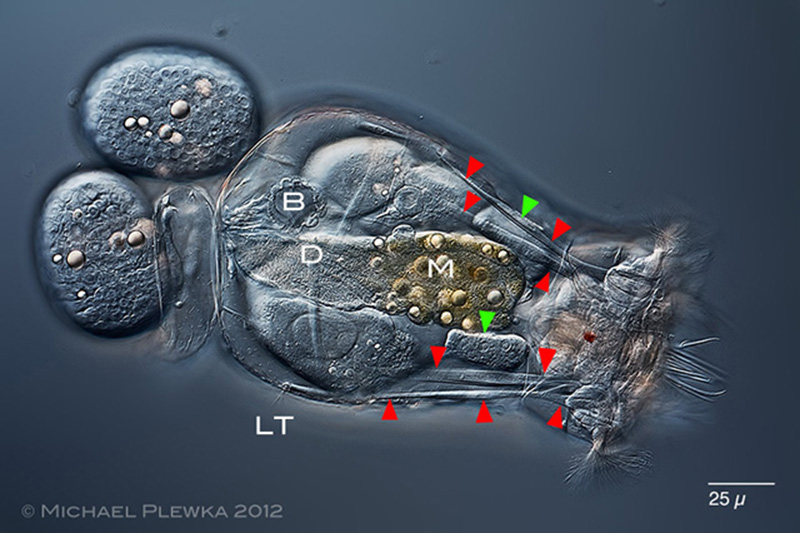 |
| Brachionus calyciflorus, another specimen; red arrowheads: muscles and nerve cells; green arrowheads: gastric glands; LT: lateral antenna; D: intestinum; B: bladder. (2) |
| |
|
| Brachionus calyciflorus, lateral view of (part of) the head with sensory organs: red: eyespot. Left: dorsal antenna protruded; right, dorsal antenna retracted. |
| |
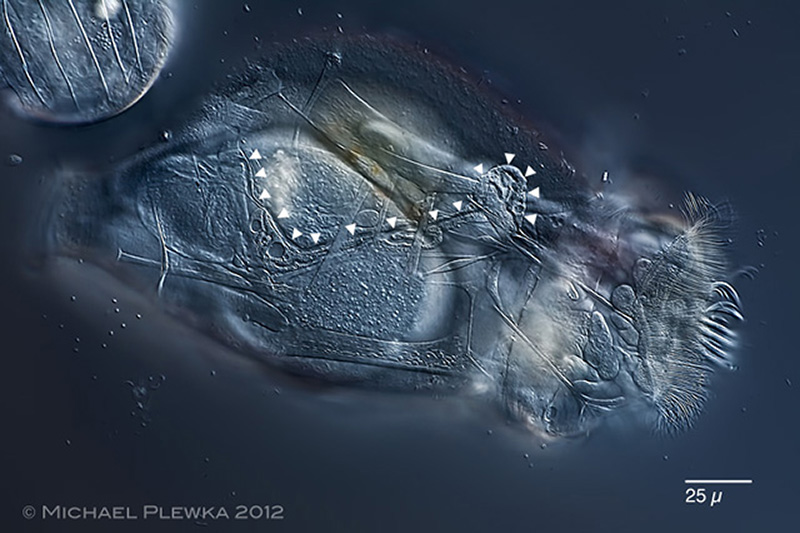 |
| Brachionus calyciflorus, focus plane is on the nephridial system (triangles) |
| |
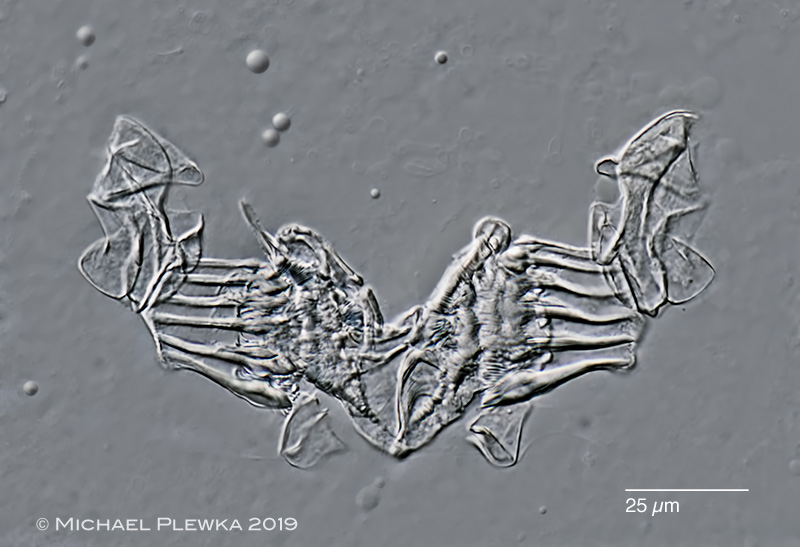 |
| Brachionus calyciflorus, malleate trophi (5) |
| |
| |
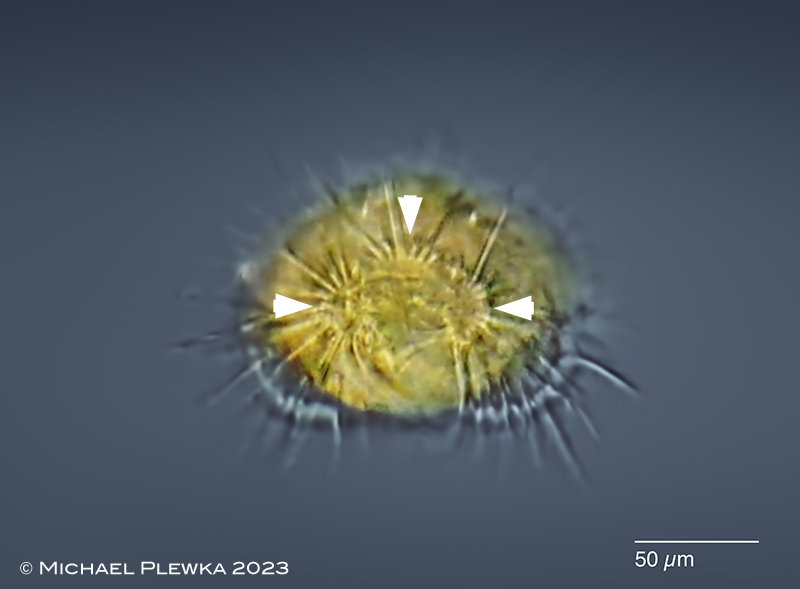 |
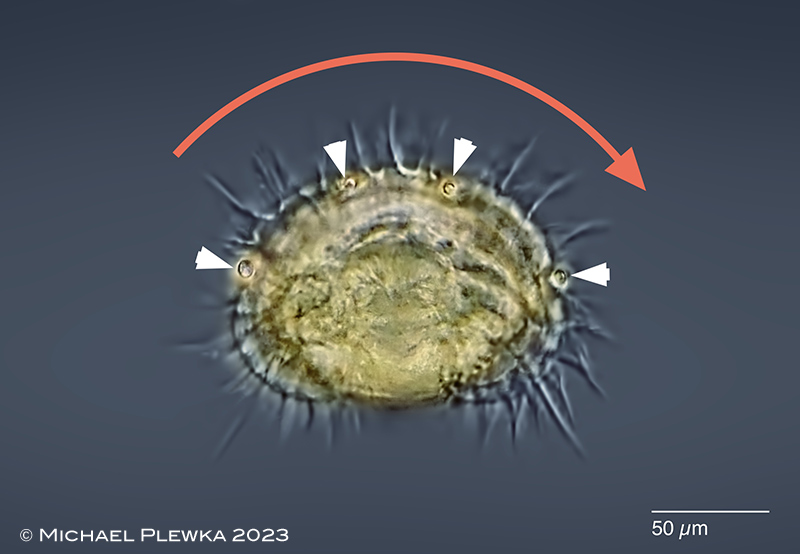 |
| Brachionus calyciflorus, two images of specimen in frontal view. Upper image: focal plane on the cirri of the pseudotrochus which are arranged in 3 arcs (arrowheads). Lower image: focal plane on the circular wreath of cilia of the cingulum, the metachronal movement of which is in clockwise direction in frontal view and therefore is laeoplectic (the effective stroke of the cilia is backwards for swimming forwards), which is shown by the red bowed arrow. The arrowheads point to the 4 anterior spines of the lorica. (8) |
| |
|
| Brachionus calyciflorus, is common in many lakes and ponds in Germany. Upper images: specimens from (1); lower left: specimen from (2); lower right: specimen from (8) |
| |
| ecology |
| |
| |
| ecology 1 |
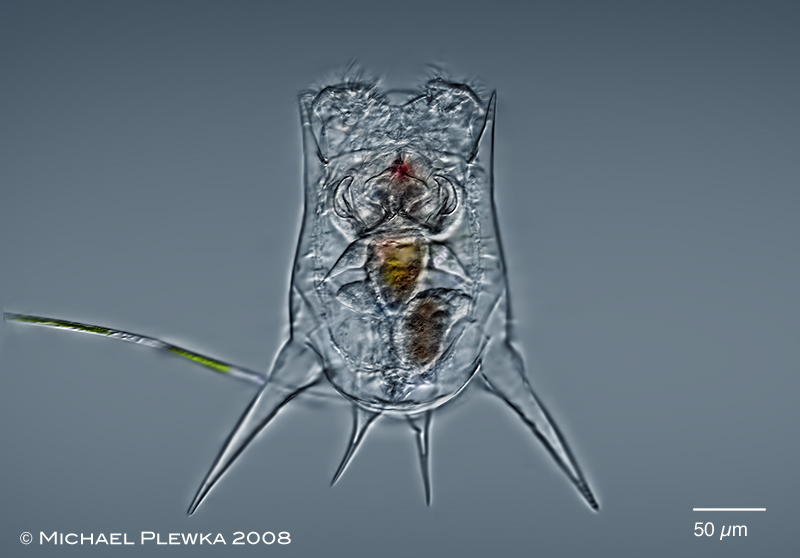 |
| Another variety of B. calyciflorus with long spines on the back is >>> Brachionus calyciflorus var. anuraeiformis |
| If the carnivorous rotifer Asplanchnais present in the water B. calyciflorus develops long spines which function as a protection because when having spinesthe animal is too bulky to be engulfed by the predator. It has been shown that the growth of the spines is induced by a substance that is produced by Asplanchna itself. An interesting topic with developmental, genetic and ecological facets. |
| |
| ecology 2 |
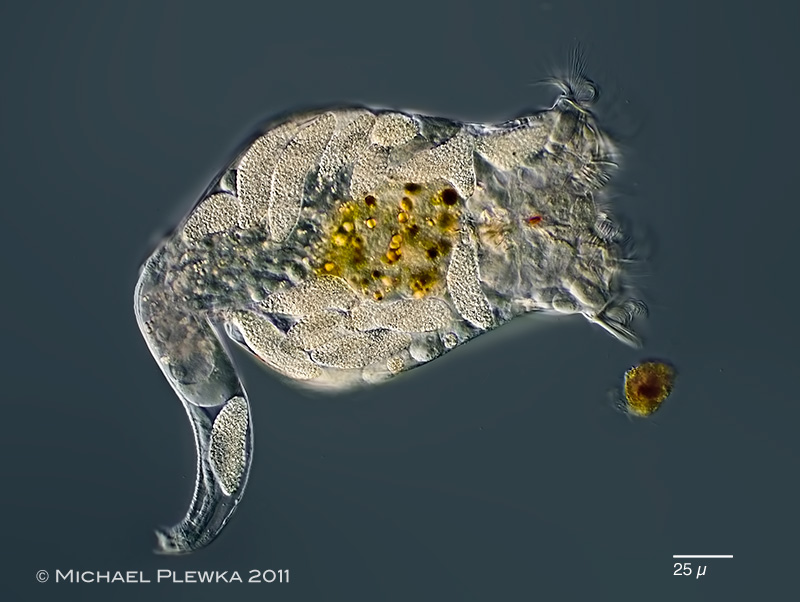 |
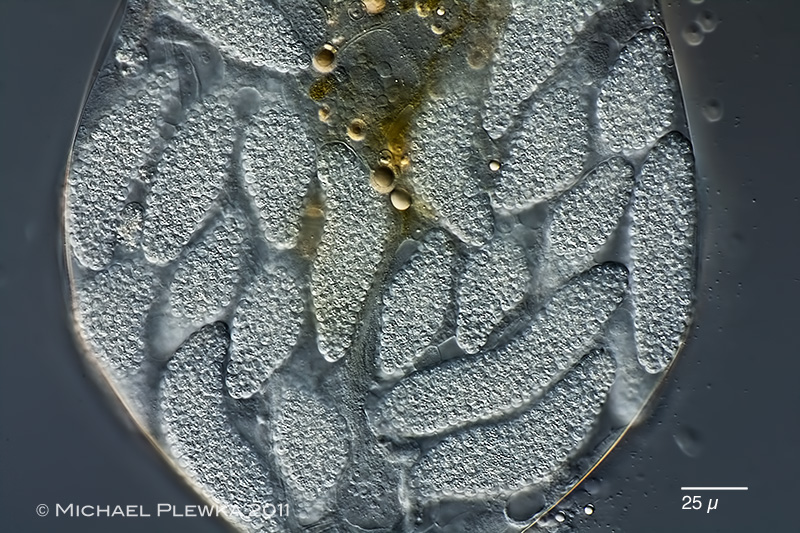 |
| Brachionus calyciflorus; this specimen is full of fungal parasites: Bertramia asperospora (Plistophora asperospora, Microsporodia) |
| |
| |
| |
| |
|
|
| |
| |
|
|
| |
| |
|
|
| |
| |
|
|
| |
| |
|
|